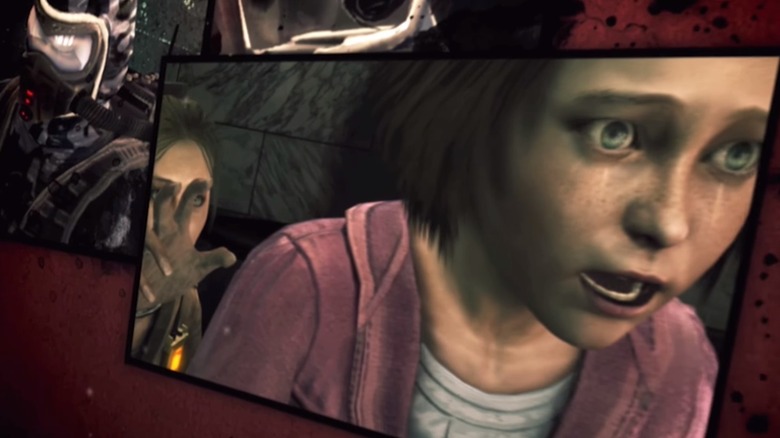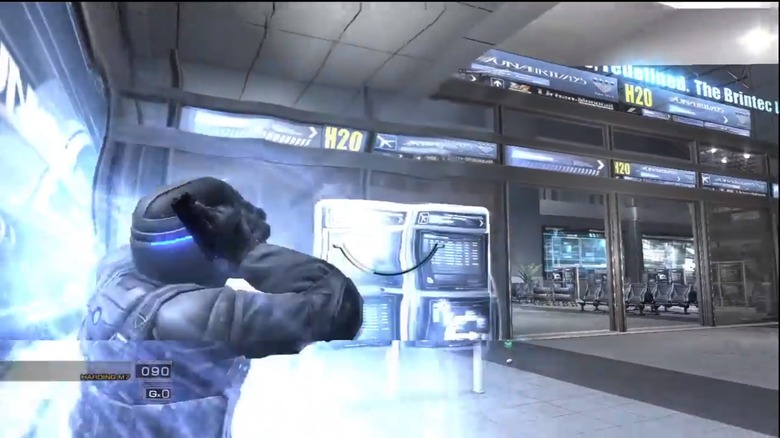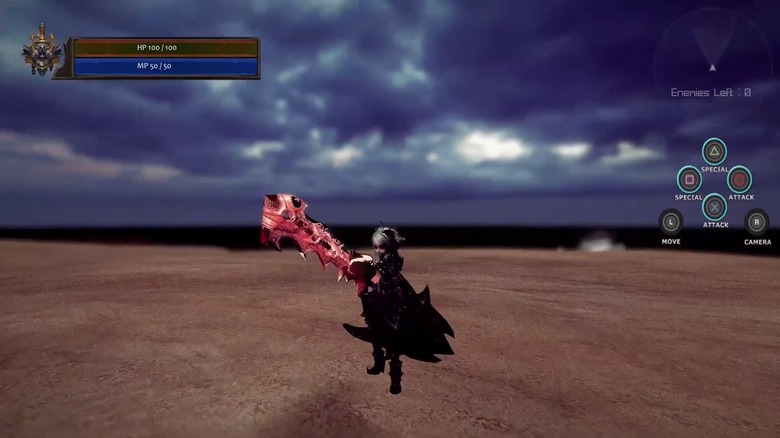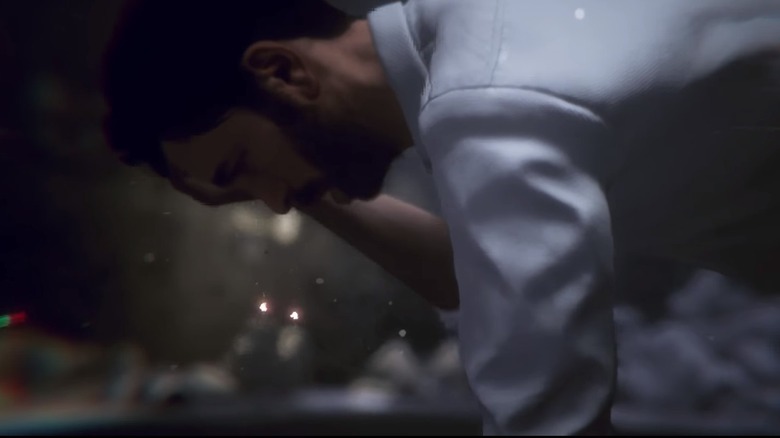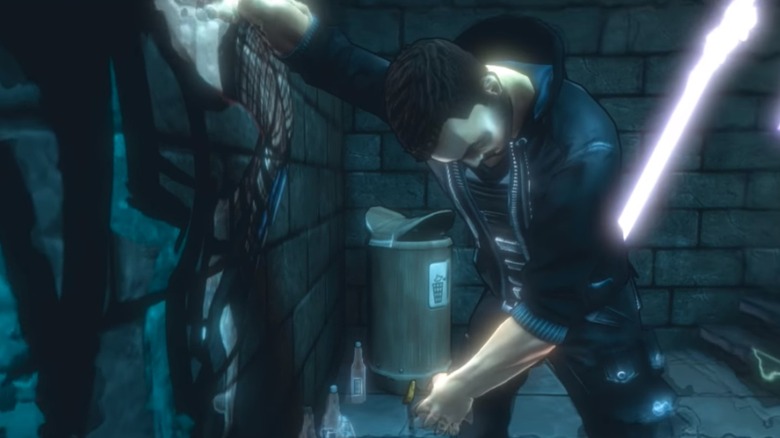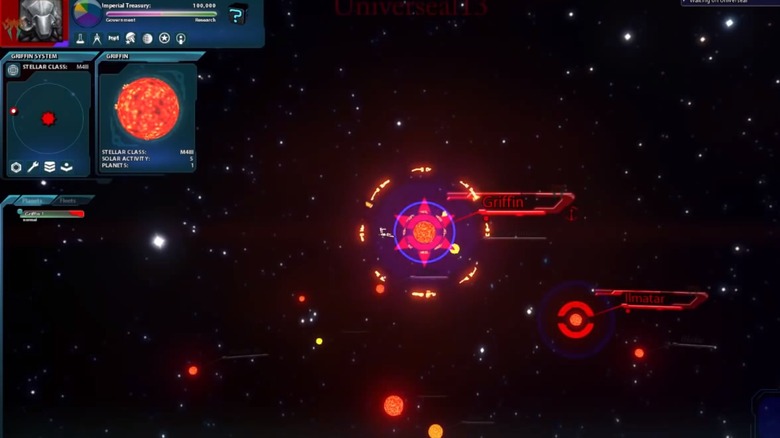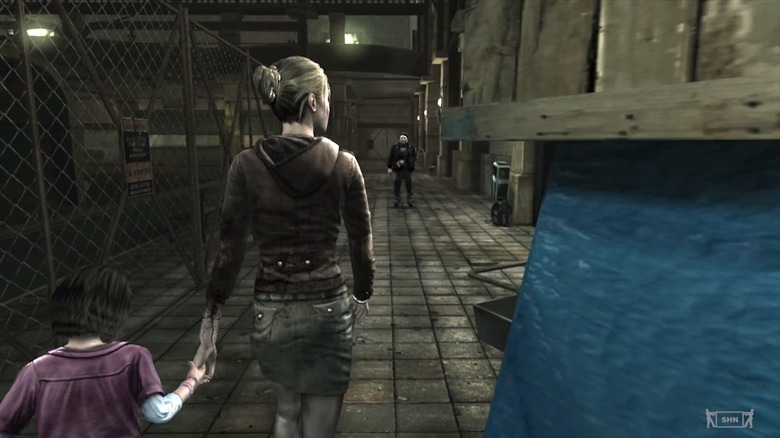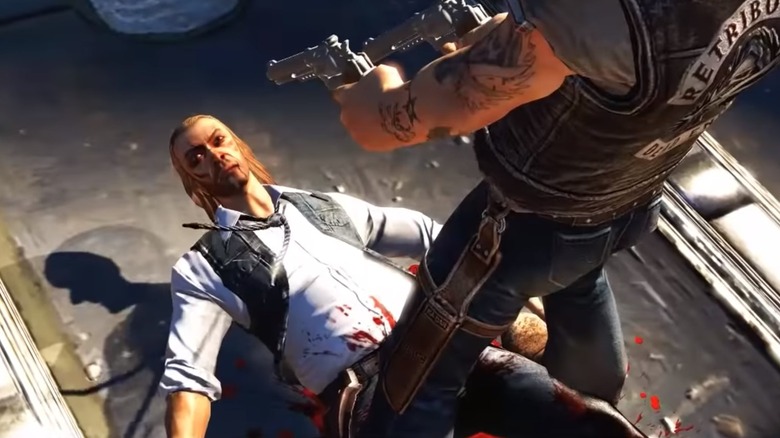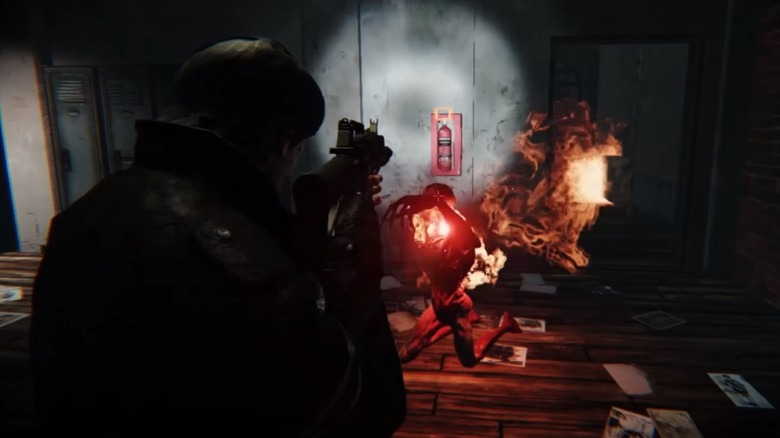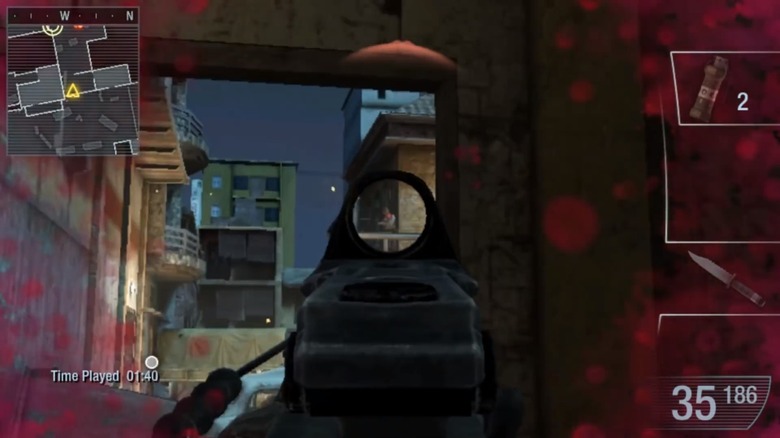Games That Killed Themselves In A Matter Of Seconds
Few industries seem to understand the concept of making a good first impression as poorly as the gaming industry. Players have endured a surplus of mind-numbing opening sequences, foisted upon them by oblivious publishers. These disasters have almost killed several otherwise brilliant games, leaving you to wonder what the design team was thinking. With the cost of video games paid up front, perhaps they consider players a captive audience. Or are they incapable of looking at their own work objectively? The answer remains a mystery.
Strewn among the diamonds in the rough are opening scenes so abysmal the games have no chance of recovery. Plagued with bad acting, poor writing, and messy mechanics, they crash and burn before getting off the ground. Monotonous and frustrating money pits, these titles serve as a cautionary tale. Yet, for all their flaws, it's almost impossible to look away. Here are games that killed themselves within the first few seconds.
MindJack
MindJack is a cover-based third-person shooter released by Square Enix in January 2011. Set in a generic-looking futuristic setting, the game promised to distinguish itself through its "mind hack" technology. Basically, the protagonist can "mindslave" foes he's felled, reviving them and sending them hurtling at other enemies. Once you mindslave a target, you can then "mindjack" it, jumping in and controlling them first hand.
MindJack falls short of this promising premise in every way. Things get off to a rocky start as the game launches you into a grainy, motion-sickness inducing tutorial. After enduring two minutes of pulsing, white light, you're blasted with a disorienting cutscene. Images swirl across the screen with no clear theme or purpose before you emerge into what seems to be an airport terminal.
The first level introduces you to the two main characters, one a special operative working for a government agency, the other a mysterious woman who teams up with you to foil a nebulous plot for world domination. This partnership starts off with good old Jimboy (yes, that's what they call him) giving the poor schmuck she's talking to the smack down for no clear reason.
The game feels like a poorly written, repetitive version of Gears of War, populated by unintelligent AI. Enemies wander around like they're waiting for you to shoot them. Using the minddjack ability leaves your body at the mercy of this same AI, rendering the game's core gimmick almost unusable.
Solbrain: Knight of Darkness
Solbrain: Knight of Darkness is one of those special games that managed to kill itself before it was even published. The problem started with the trailer on its PlayStation 4 page. Prospective players noticed the musical score sounded familiar. It soon came to light that Lightning Game Studios had lifted the track from the indie game Ori and the Blind Forest, a theft confirmed by Ori director Thomas Mahler.
More asset theft came to light following the game's release on August 16, 2016, documented by several incredulous users on a NeoGaf thread. Among these were the game's logo, taken from an uncredited DeviantArt account, an identical replica of a shield from Skyrim, and the Warrior Crest from World of Warcraft.
Beyond the stolen content, the game itself is so bad it almost feels like a practical joke. It has zero story, instead dropping you into a random map with no context, tutorial, or objectives. The gameplay consists of hacking your way through a smattering of enemies across nigh-identical levels.
It's unclear how the game bypassed Sony's quality radar, let alone earned top billing on their PlayStation YouTube channel. They have since removed the trailer and the game itself. The developers, who have a suspiciously minimal web presence, seem to have slithered back into their cave for now. Though, considering how many Solbrain games they published on PlayStation VITA, they may yet reemerge to steal some more content.
Past Cure
Developer Phantom 8 Studio presents Past Cure as a story-driven psychological thriller that "blurs the line between dreams and reality." Lines do, in fact, blur, creating an incoherent mess of genres and playstyles that evokes an ongoing identity crisis. Is it a third-person shooter? Puzzle solver? Horror game? Past Cure itself doesn't seem to know.
Past Cure jumps the gun right at the start, dropping you into a repetitive and frustrating dreamscape reminiscent of the nightmare levels in Max Payne. It then sends you into a lengthy tutorial, drilling in abilities it flippantly discards as you progress.
The story, while an interesting concept, falls apart under scrutiny. Plot holes abound, leaving you with more questions than answers. The main character's voice acting also leaves much to be desired. Each line is flat and uninspiring, no matter the circumstances, diminishing any cinematic value the game may have.
Stunted mechanics only muddy the game further. By the time you slog through the repetitive levels and forced stealth actions, you hardly care about the characters or unanswered plot questions. Even the protagonist's slow-motion and astral projection abilities lose their sparkle.
In July 2018, about four months after Past Cure's release, the publisher acknowledged the host of problems in a developers' log. Though they took the criticism to heart and made several changes in the second patch, the damage had already been done. You only get one chance to make a first impression.
Dark
Much like zombies, vampires have become a staple of the fantasy gaming world. With this continued exposure comes a wealth of tropes to avoid, or, in the case of Dark, jumble together and see what happens.
Dark is a stealth-action-roleplaying game, released by Kalypso Media on Windows and Xbox 360 in 2013. Here, "stealth-action" means cowering behind conveniently placed structures as you wait for enemy patrols to pass by. Or get stuck on a chair. Or freeze entirely.
You wouldn't associate cowering with a vampire protagonist. Of course, Eric isn't your typical bloodsucker. Freshly turned, he feels more like a teenager who just entered puberty, all knees and elbows and full of emotions he has no clue how to process.
The first few minutes of play reveal the recurring problems of the game: bad writing, awful dialogue, and flat, unlikable characters, all wrapped in an endless parade of cliches. The opening line "I awoke to a world of pain" augurs what's to come as you watch Eric stumble around a nightclub, before running into an angel in the bathroom. She tells him his "assignment is waiting," then sends him on his merry way.
What follows is levels of boss hunting, devoid of all character development. You might feel embarrassed for Eric, who can't seem to do anything without drawing unwanted attention, if listening to him weren't such a chore. This same drudgery seeps into every element of the game, making it more punishment than pleasure.
Sword of the Stars 2: Lords of Winter
This science-fiction strategy game, published by Paradox Interactive, was basically unplayable on its release in October 2011. There were so many issues with broken code, instability, and crashing that the CEO of Kerberos Productions, the game's developer, issued a public apology. A year of patches later, and Sword of the Stars 2: Lords of Winter was (mostly) functional.
Unfortunately, no amount of patches can fix bad design choices. Sword of the Stars 2 throws you into the mix with no tutorial or sign of how to use the controls. A cramped interface, filled with menu after menu of minuscule text and poorly placed buttons, adds fuel to the fire.
Add in arbitrary missions, low graphics quality, baffling gameplay, and cringe-worthy voice acting and you've got a game with little charm and no real payoff. You dream of conquering galaxies but are forced into the tedious bureaucracy of building up fleets and star systems, only to discover you haven't invested in the right areas to accomplish anything.
Combat isn't any better, with most of your time spent flying around in search of the enemy. Even if you manage to engage, it's a struggle to perform the most basic maneuvers. Often, the combat timer expires before you get some good shots off, leaving you to wonder why you bothered at all, a question you'll continue to ask yourself throughout the experience.
Amy
A survival horror game, Lexis Numérique released Amy in January 2012. The game follows an autistic girl and Lana, the woman who rescued her from a test center, as they navigate a zombie outbreak. An earnest attempt to revive its dwindling genre, Amy falls short of its goal.
The opening cinematic exposes some of Amy's main problems. It's choppy and poorly animated, with main characters who rest within the uncanny valley. Poor voice acting and odd dialogue choices make the opening more difficult to like. The scene concludes with a zombie version of the ticket taker Lana just spoke with attacking her, leaving you to wonder what happened in the ten seconds he was off screen.
Launching into the action, you discover a lot of elements "borrowed" from other games. To avoid some enemies, Lana must hide in lockers or beneath tables. Needless, repetitive jump scares punctuate these moments, so obvious you see them coming a mile away.
Amy continues to fail with its combat system. Holding the camera at an angle causes Lana to stumble and stutter while running involves an unpleasant mashing of buttons. When you're not trying to flee, fights consist of hammering at undead with metal bars, while hoping the game will let your attack to connect.
Checkpoints may provide the biggest issue, spaced so far apart you're forced to repeat the same sections multiple times. With its litany of sins, Amy is simply boring and unpleasant to play.
Ride to Hell: Retribution
Ride to Hell: Retribution is an action-adventure game published by Deep Silver in 2013. The game takes place in 1969, following Jake Conway during his exploits alongside his family of bikers. A confusing and, sometimes, offensive title, its attempt at seeming flashy and "cool" fall flat, leaving a bad taste in your mouth.
The opening sequence captures the over-the-top, unfocused tone of the game. A ten-second cutscene of what appears to be the main character riding on a motorcycle flashes by before dropping you right into gameplay. One moment you're on your bike, the next you're standing on a wooden platform being shot at by enemies. The game gives no context about the story or why any of this is happening.
Ride to Hell features a variety of broken play options, marred by terrible driving controls, infrequent checkpoints, awkward character models, and witless AI. Glitches run rampant, as do lengthy load screens, and textures that fail to render. The story itself is ridiculous as are the attempts at voice acting.
Adding fuel to the fire, the game features a tutorial which explains that helping women will automatically result in them having sex with you. These sex scenes unfold with the characters performing the deed fully clothed. Having sex also happens to heal you.
Broken, offensive, and miserable, Ride to Hell: Retribution is a top contender for the worst game ever written.
Alone in the Dark: Illumination
Alone in the Dark: Illumination is an online-only survival horror game released by Atari Interactive in June 2015. The sixth installment in the iconic Alone in the Dark series, the game is a testament to how far the franchise has fallen over the last two decades.
At the start of the game, you select one of four generic classes to play before an exposition-filled wall of text smacks you in the face. You're then dropped right into gameplay without any sort of tutorial. The narrative continues to appear in tiny script at the bottom of the screen as you shoot your way to the first objective.
The levels consist of an endless succession of hallways, filled with the same sparse furnishings. Enemies are cookie-cutter demons, shielded by a gimmick that leaves you comically groping for light switches. More annoying than scary, they're another dull component of a game that feels slapdash and lazy. Even the music and sound effects seem unfinished, mostly leaving you in silence.
Bug-ridden and boring, Alone in the Dark: Illumination plays more like a poor imitation of Left for Dead 2 and Resident Evil 6 than the latest entry in the series that helped create the modern survival horror genre.
Call of Duty: Black Ops: Declassified
Activision released Call of Duty: Black Ops: Declassified on PlayStation Vita in November 2012. The game is a shining example lazy game design, banking on the franchise name to rake in easy money.
Black Ops: Declassified opens with a disorienting cutscene that races through character introductions and exposition at a breakneck speed before dropping you into play. The bad AI quickly leaks through, with NPCs accidentally killing themselves via explosion by shooting at you through cars. The first mission takes about four minutes to complete, a trend that continues throughout the game. If anything, the AI loses intelligence as the missions unfold, with some opponents even running towards grenades when you throw them. Broken aiming makes combat, the component the game rests on, a chore.
The single-player narrative is almost non-existent, taking about an hour to complete. Multiplayer doesn't fare much better, offering small environments with little variety. Add in lots of glitches, crashes, and connection issues, and you've got an embarrassing addition to the franchise which Activision had the audacity to release at $50 price point.

